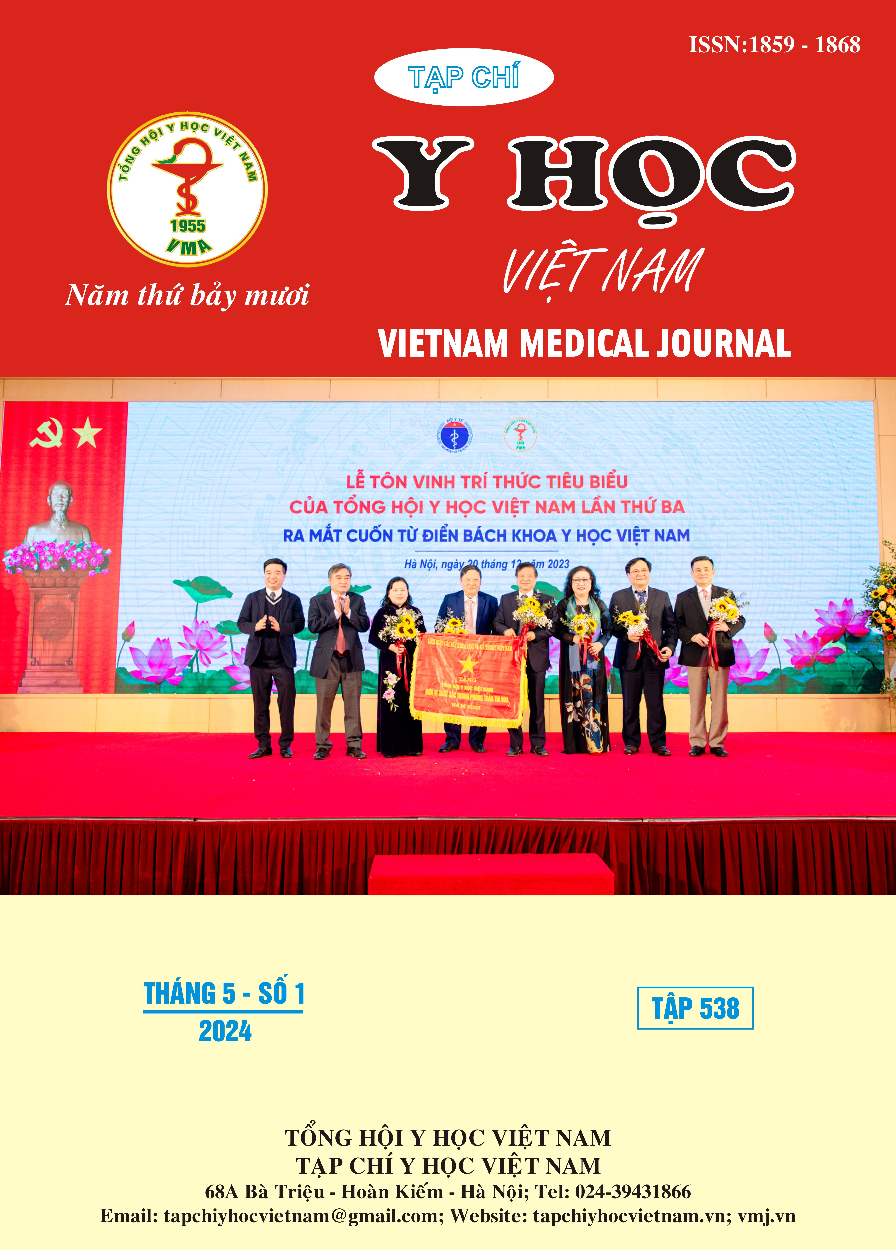CLINICAL FEATURES, IMAGING FINDINGS OF UPPER THORACIC SPINE FRACTURE PATIENTS TREATED WITH SURGERY AT VIET DUC UNIVERSITY HOSPITAL
Main Article Content
Abstract
Objective: To describe the clinical, subclinical of patients with upper thoracic spine fractures at the Spinal Surgery Department- Viet Duc University Hospital. Subjects and methods: 23 patients were diagnosed upper thoracic spine fractures at Sipnal Surgery Department- Viet Duc University Hospital from June 2018 to June 2021. Results: 23 patients were diagnosed upper thoracic spine fractures who underwent decompression and pedicle screw surgery at the Spine surgery department the mean age was 33.96 ± 14.62, most common in the working age group (from 20 to 60) accounting for 78.3%. The main cause is traffic accidents, accounting for 69.6%. The ratio in men is higher than in women with a ratio of ~ 4.75/1. Clinical symptoms: all patients had pain in the traumatic spine area with an average VAS of 5.52 ± 1.34; Neurological damage according to AIS when entering the hospital is 60.8% AIS A, AIS B accounts for 13%, AIS C accounts for 8.7%, AIS D accounts for 4.3%. In terms of subclinical, the most common lesion location is T4 with 15 segments, followed by T3 with 12 segments; 47.8% of patients had damage to 2 vertebrae, 4.3% of patients had damage to 3 vertebrae, 47.3% of patients had damage to 1 vertebra. Conclusion: The disease mainly occurs in working age people, mainly due to traffic accidents. The clinical symptoms of all patients include pain in the traumatic spine area with nerve damage.
Article Details
Keywords
Spinal injury, upper thoracic spine.
References
2. Theologis AA, Tabaraee E, Funao H, et al. Three-column osteotomies of the lower cervical and upper thoracic spine: comparison of early outcomes, radiographic parameters, and peri-operative complications in 48 patients. Eur Spine J. 2015; 24(S1):23-30. doi:10.1007/s00586-014-3655-6
3. Gattozzi D. Surgery for traumatic fractures of the upper thoracic spine (T1–T6). Surgical Neurology International. 2018;9(1):231. doi:10. 4103/ sni.sni_273_18
4. Lê Văn Tuyền. Đánh giá đặc điểm hình ảnh chấn thương cột sống ngực - thắt lưng theo phân loại TLICS tại bệnh viện Việt Đức. 2017.
5. Lê Hoàng Nhã. Điều trị gãy cột sống ngực do chấn thương bằng phẫu thuật nẹp vít cuống cung. Luận văn thạc sĩ y học. 2016.
6. Gattozzi D, Friis L, Arnold P. Surgery for traumatic fractures of the upper thoracic spine (T1–T6). Surg Neurol Int. 2018;9(1):231. doi:10.4103/sni.sni_273_18
7. Nguyễn Quang Huy. Đánh giá kết quả điều trị phẫu thuật chấn thương cột sống ngực bằng phương pháp bắt vít qua cuông tại bệnh viện Việt Đức. Published online 2010.
8. NashLawrason J. Early detection of thoracic spine fracture in the multiple trauma patient: Role of the initial portable chest radiograph. Emergency Radiology. Published online 1997:11.
9. Fracs RS. Health-related quality-of-life outcomes after thoracic (T1-T10) fractures. The Spine Journal. Published online 2013:8.
10. Haba, Hitoshi, et al. "Diagnostic accuracy of magnetic resonance imaging for detecting posterior ligamentous complex injury associated with thoracic and lumbar fractures." Journal of Neurosurgery: Spine 99.1 (2003): 20-26.


